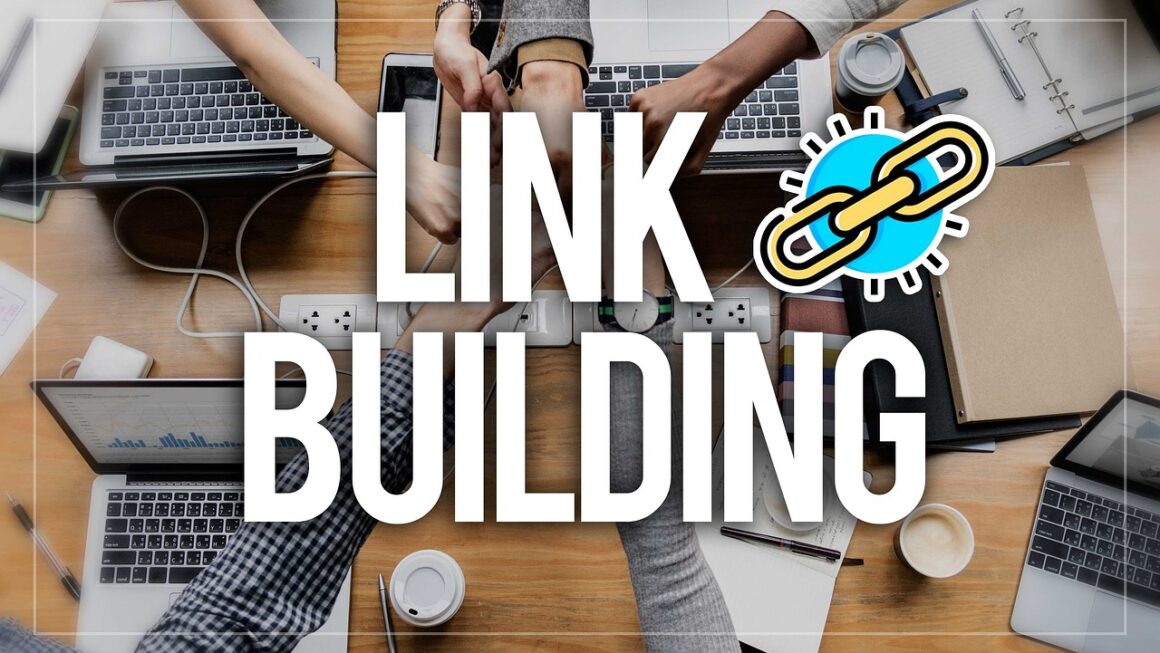Imagine a marketing strategy so seamless, so personalized, and so effective that customers feel understood and catered to at every single touchpoint. This isn’t a futuristic fantasy; it’s the reality of AI-powered omnichannel marketing. By leveraging the power of artificial intelligence, businesses can create hyper-personalized customer journeys that drive engagement, loyalty, and ultimately, revenue. This blog post will delve into the specifics of AI omnichannel marketing, exploring its components, benefits, and how you can implement it in your own business.
Understanding AI Omnichannel Marketing
Defining Omnichannel Marketing
Omnichannel marketing is a customer-centric approach that provides a unified and consistent brand experience across all channels and devices. Unlike multichannel marketing, where channels operate independently, omnichannel integrates them, allowing customers to seamlessly transition between platforms without losing context.
- Key features of Omnichannel Marketing:
Customer-centricity: Focuses on providing a seamless and consistent experience for the customer, regardless of the channel.
Channel Integration: Integrates all marketing channels (e.g., email, social media, mobile apps, in-store) to work together.
Personalization: Delivers personalized content and offers based on customer data and behavior.
Consistent Branding: Maintains a consistent brand message and identity across all channels.
The Role of AI in Enhancing Omnichannel
Artificial intelligence (AI) takes omnichannel marketing to the next level. AI algorithms analyze vast amounts of customer data to understand preferences, predict behavior, and automate personalized interactions. This goes beyond basic segmentation, enabling true one-to-one marketing at scale.
- How AI Enhances Omnichannel Marketing:
Data Analysis: Analyzes large datasets to identify patterns and insights about customer behavior.
Personalization at Scale: Enables the delivery of personalized content and offers to individual customers across all channels.
Predictive Analytics: Predicts customer behavior and preferences to proactively engage with them.
Automation: Automates repetitive tasks and processes, freeing up marketers to focus on more strategic activities.
Real-time Optimization: Optimizes marketing campaigns in real-time based on performance data.
- Example: Imagine a customer browsing a product on your website. AI can track this behavior, and if the customer doesn’t make a purchase, trigger a personalized email with a discount code or additional product information. If the customer then visits your physical store, a sales associate can be alerted to their previous online activity, enabling a more informed and personalized conversation.
Benefits of AI-Powered Omnichannel Marketing
Improved Customer Experience
AI allows businesses to create highly personalized experiences that cater to individual customer needs and preferences. This leads to increased customer satisfaction and loyalty.
- Benefits:
Increased Customer Satisfaction: Personalized interactions and seamless experiences lead to higher satisfaction levels.
Enhanced Customer Loyalty: Customers are more likely to remain loyal to brands that understand and cater to their needs.
Improved Brand Perception: A consistent and personalized experience across all channels strengthens brand perception.
Increased Engagement and Conversions
By delivering the right message at the right time on the right channel, AI can significantly increase customer engagement and drive conversions. Personalized offers and proactive engagement can encourage customers to make purchases.
- Benefits:
Higher Engagement Rates: Personalized content and timely interactions lead to increased engagement rates.
Improved Conversion Rates: Targeted offers and proactive engagement encourage customers to make purchases.
Increased Sales Revenue: Higher engagement and conversion rates translate into increased sales revenue.
Enhanced Marketing Efficiency
AI automates many marketing tasks, freeing up marketers to focus on more strategic initiatives. This leads to increased efficiency and reduced costs. AI can also analyze campaign performance to identify areas for improvement, leading to more effective marketing strategies.
- Benefits:
Automation of Repetitive Tasks: AI automates tasks such as email marketing, social media posting, and ad optimization.
Improved Campaign Performance: AI analyzes campaign data to identify areas for improvement and optimize performance.
Reduced Marketing Costs: Automation and optimization lead to reduced marketing costs.
- Example: An e-commerce company uses AI to personalize product recommendations on its website, leading to a 20% increase in conversion rates. The AI also automates email marketing, sending personalized emails based on customer behavior, resulting in a 15% increase in email open rates.
Implementing AI Omnichannel Marketing
Data Collection and Integration
The foundation of AI-powered omnichannel marketing is data. Businesses need to collect data from all relevant sources and integrate it into a centralized platform. This data should include customer demographics, purchase history, browsing behavior, and social media activity.
- Key Steps:
Identify Data Sources: Determine all sources of customer data, including website analytics, CRM, social media platforms, and in-store systems.
Implement Data Collection Tools: Use tools such as Google Analytics, CRM software, and social media analytics platforms to collect data.
Integrate Data into a Centralized Platform: Use a data management platform (DMP) or customer data platform (CDP) to integrate data from all sources into a single view.
Ensure Data Privacy and Compliance: Comply with data privacy regulations such as GDPR and CCPA.
Choosing the Right AI Tools
There are many AI tools available that can help businesses implement omnichannel marketing. It’s important to choose tools that are appropriate for your specific needs and goals. Some popular AI tools include:
- Customer Data Platforms (CDPs): Centralize customer data from various sources to create unified customer profiles.
- Marketing Automation Platforms: Automate marketing tasks such as email marketing, social media posting, and lead nurturing.
- Personalization Engines: Deliver personalized content and offers based on customer data and behavior.
- Predictive Analytics Tools: Predict customer behavior and preferences to proactively engage with them.
- Chatbots: Provide instant customer support and personalized recommendations on websites and mobile apps.
- Example: A retail company uses a CDP to create unified customer profiles, which are then used to personalize email marketing campaigns. The company also uses a chatbot on its website to provide instant customer support and personalized product recommendations.
Creating Personalized Customer Journeys
AI enables businesses to create highly personalized customer journeys that are tailored to individual customer needs and preferences. This involves mapping out the customer journey, identifying key touchpoints, and creating personalized content and offers for each touchpoint.
- Key Steps:
Map Out the Customer Journey: Identify all the steps a customer takes when interacting with your brand, from initial awareness to post-purchase engagement.
Identify Key Touchpoints: Determine the most important touchpoints in the customer journey, such as website visits, email interactions, and social media engagement.
Create Personalized Content and Offers: Develop personalized content and offers for each touchpoint, based on customer data and behavior.
Test and Optimize: Continuously test and optimize your customer journeys to improve performance.
Overcoming Challenges in AI Omnichannel Marketing
Data Privacy and Security
Collecting and using customer data raises concerns about privacy and security. Businesses need to implement robust security measures to protect customer data and comply with data privacy regulations.
- Solutions:
Implement Data Encryption: Encrypt customer data to protect it from unauthorized access.
Comply with Data Privacy Regulations: Adhere to data privacy regulations such as GDPR and CCPA.
Obtain Customer Consent: Obtain explicit consent from customers before collecting and using their data.
Regularly Audit Security Measures: Regularly audit your security measures to identify and address vulnerabilities.
Integration Complexities
Integrating data from multiple sources can be complex and challenging. Businesses need to invest in robust integration tools and expertise to ensure data is accurately and effectively integrated.
- Solutions:
Use Integration Platforms: Use integration platforms such as MuleSoft or Zapier to connect different systems and applications.
Develop APIs: Develop application programming interfaces (APIs) to enable data sharing between systems.
Hire Integration Experts: Hire integration experts to help you design and implement your data integration strategy.
Skills Gap
Implementing AI-powered omnichannel marketing requires specialized skills in areas such as data science, AI, and marketing automation. Businesses may need to invest in training or hire new employees with these skills.
- Solutions:
Provide Training: Provide training to existing employees in areas such as data science, AI, and marketing automation.
Hire New Employees: Hire new employees with the necessary skills and expertise.
Partner with AI Experts:* Partner with AI experts or consultants to help you implement your AI strategy.
Conclusion
AI-powered omnichannel marketing represents the future of customer engagement. By leveraging the power of artificial intelligence, businesses can create personalized, seamless experiences that drive customer loyalty and increase revenue. While there are challenges to overcome, the benefits of AI omnichannel marketing are undeniable. By focusing on data collection, choosing the right tools, and creating personalized customer journeys, businesses can unlock the full potential of AI and create a truly customer-centric marketing strategy. Embracing this technology is no longer a luxury, but a necessity for businesses looking to thrive in today’s competitive landscape.




